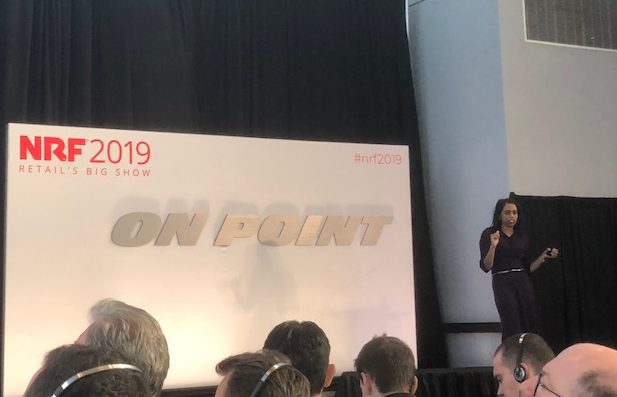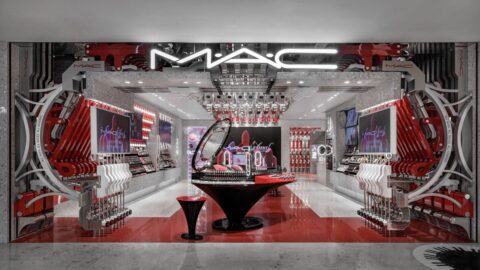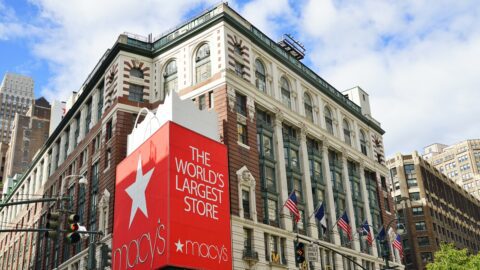Personalization will continue to be a hot-button investment item for retailers in 2019, but they will have to struggle with consumers’ cognitive dissonance to implement it effectively, according to Sucharita Kodali, VP and Principal Analyst at Forrester Research. Kodali spoke during the State of Retail Innovation 2019 session on Sunday, Jan. 13 at the NRF Big Show.
Up to 36% of shoppers say retailers need to do more to offer more personalized experiences, with this percentage reaching 43% for households that earn more than $100,000 annually, according to data from Forrester Research. Yet despite the evident desire for personalization, shoppers are still hesitant to share the personal information that can steer retailers in the right direction, and are overall distrustful of the concept.
“There’s a lot of tension in the personalization landscape, and that tension is what consumers want, what they expect and ultimately how retailers are able to deliver against them,” said Kodali, VP and Principal Analyst at Forrester. “A lot of consumers are very skeptical about the data that is being collected about them and how the data is being used.”
As many as 17% of consumers still aren’t willing to share data at all. More than half (52%) of shoppers still worry about retailers knowing too much about them, and that percentage jumps to 59% for higher-earning households. Similarly, 46% are uncomfortable with the amount of information that retailers can collect about them, while 53% of higher-earning households agree.
Consumers Prefer To Share Purchase Info, But Don’t Want To Get Too Personal
In fact, background on products they like is the only kind of data that more than 50% of shoppers were willing to share in order to receive more personalized discounts or offers, according to study from Forrester and RetailMeNot.
While 40% of shoppers were willing to share hobbies and interests and 37% were willing to share products they already own, they are heavily guarded about divulging their most personal information, including:
- How much they like to spend on products (26%);
- Social media information (7%);
- Permission to track their online activities (6%); and
- Friends or followers on social networks (4%).
“A lot of what shoppers find acceptable to share with retailers is straight-up purchase information,” Kodali said. “What are the products that I like and own? For some consumers it’s okay to use location information. What’s off limits, and this is where so much of remarketing and retargeting is delving into — this is the heart of the Cambridge Analytica scandal with Facebook — they don’t want any of their other social activities to be tracked. It is incredibly important to collect information in a way that’s useful to retailers, and not invasive or more than what shoppers are expecting.”
2019: The Year Of Collisions And Clashes
To close the presentation, Kodali predicted that 2019 would be a year defined by four battles within retail:
- Amazon vs. Walmart: The two retail giants will continue to scramble for power in the following categories: B2B, grocery, international, last mile delivery, third-party sellers, media and advertising. B2B, grocery and international are all trillion-dollar opportunities, with Amazon presently winning in B2B and international, while Walmart has the edge in grocery. “I still see a lot of challenges with an online player winning in grocery,” Kodali said. “We don’t think Whole Foods was enough to really change the game for Amazon in that direction.”
- Brands vs. Amazon: Brands have historically thought that, as third-party sellers on the Amazon marketplace, they controlled their own prices. Yet Kodali shared an example of a seller that had its product discounted by Amazon. Additionally, brands are pulling back their products from Amazon due to knockoffs and the e-Commerce giant’s alleged slow response to take them down.
- Personalization vs. privacy: More privacy laws are likely going into effect, especially in the wake of Europe’s GDPR in 2018.
- Focus vs. innovation: Diversification and entry into new businesses/markets are essential for continued growth. For example, while Microsoft generated 80% of its revenue from Windows and Office in 2000, it evolved to generate 50% from cloud, hardware and social networks by 2018.
“When we look at the technology titans — Apple, Amazon, Google and Microsoft — and we look at where their revenues come from now as compared to 2000, every single one of them is vastly different,” Kodali said. “If I were to do the same chart of four top retailers, their revenue from the year 2000 would likely be exactly the same as their source of revenue today.”













